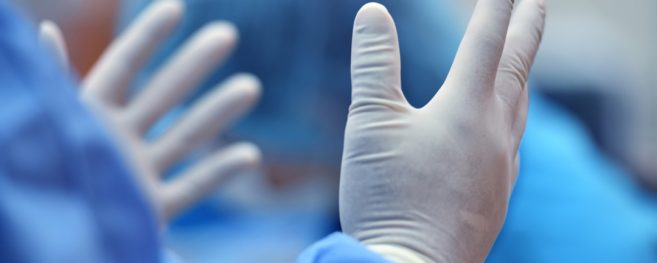Nonalcoholic Fatty Liver Disease (NAFLD)
Nonalcoholic fatty liver disease (NAFLD) is a term used to describe the accumulation of fat in the liver of people who drink little or no alcohol. That fat that accumulates can cause inflammation scarring in the liver. This more serious form of nonalcoholic fatty liver disease is called nonalcoholic steatohepatits. At its most severe, non-alcoholic fatty liver disease can progress to liver failure. The exact mechanism of NAFLD is unknown but it involves insulin resistance, steatosis, the release of inflammatory cytokines and oxidative stress, which may lead to fibrosis and cirrhosis. In response to inflammatory cytokines and liver injury, collagen deposition occurs in the liver and results in fibrosis.
Non-alcoholic fatty liver disease usually causes no signs and symptoms when it does, they may include:
- Fatigue
- Pain in the right upper abdomen
- Weight loss
Nonalcoholic fatty liver disease can take several forms- from harmless to life threatening. These forms include:
- Nonalcoholic fatty liver: it is not normal for fat to build up in your liver, but it won’t necessarily cause complications.
- Nonalcoholicsteatohepatits: in a small number of people with fatty liver, the cause’s inflammation in the liver. This can impair the livers ability to function and lead to scarring of the liver (cirrhosis)
- Nonalcoholic fatty-disease associated cirrhosis: inflammation leads to scarring and becomes so severe that the liver can no longer function (liver failure)
Risk factors for non-alcoholic fatty liver disease include:
- High cholesterol
- High triglycerides
- Hypothyroidism (under active thyroid)
- Hypopituitarism (under active pituitary gland)
- Metabolic syndrome
- Polycystic ovary syndrome
- Sleep apnea
- Obesity
The prevalence of non-alcoholic fatty liver disease has increases as more people have a sedentary life style, metabolic syndrome and obesity and physical are strongly correlated with this condition, it is reasonable to except that increasing physical activity and encouraging weight loss would be helpful.
Screening for nonalcoholic fatty liver disease is not recommended in the general public. It is usually considered after an incidental discovery of unexplained elevation of liver enzyme levels or when hepatic steatosis is noted on an ultrasound.
Tests and procedure used to diagnose NAFLD include:
- Blood test: and liver function tests including liver enzymes
- Imaging: ultrasounds, CT scan and MRI
- Liver biopsy: tissue sample is examined to look for signs of inflammation and scarring. This is the only test that distinguishes hepatic steatosis from non-alcoholic steatohepatitis. Liver biopsy should be considered in atypical situations when the person has a normal BMI or highly elevated liver enzymes.
No standard treatment for NAFLD exists. Instead, the treatment plan includes treating the risk factors that contribute to liver disease. A healthy diet, weight loss, and exercise are first-line therapeutic measures to reduce insulin resistance in patients with NAFLD. The goal of therapy include the prevention or reversal of hepatic injury and fibrosis. Comorbid conditions such as diabetes, hyperlipidemia, hypertension or sleep apnea, should be addressed and treated. Bariatric surgery is effective in achieving weight loss and resolution or improvement of comorbid conditions, including fatty liver disease.











